Swami Atmanand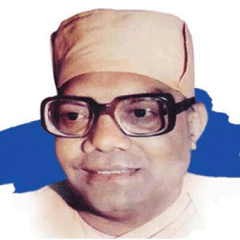
IntroductionSwami Aatmanand was a social reformer and educationist who dedicated his life to serving humanity in Chhattisgarh. He has selflessly committed his entire existence to the tribal people, kindling the torch for wisdom in the young brains, teaching them compassion and service to society. Swami Atmanand was known as Tulendra since birth. He was born on October 6, 1929, in the Raipur District village of Badbanda. Dhaniram Verma, his father, was a school teacher, and Bhagyavati Devi, his mother, was a homemaker. Dhaniram Ji enrolled at the Wardha Training Centre and moved there with his family to get well-trained in education and teaching. Dhaniram Ji routinely visited Gandhi Ji's nearby Sevagram Ashram, and Tulendra used to accompany his father to Sevagram. Baby Tulendra had a lovely voice and used the instrument to sing & hymn Bhajans. Gandhi Ji admired him for his wonderful voice and would listen to what he was saying with great interest. Gandhi Ji used to stroll about the ashram alongside Tulendra, holding one end of each lathi and running, which was complemented by Gandhi Ji's famed walking style. Dhaniram ji returned to Raipur a few years later and opened a store, continuing to live a regular life. In contrast, Tulendra graduated from St.Pauls Academy with first division and went on to science college Nagpur for further education. Due to a shortage of dormitories, he started staying in the Ramkrishna Ashram, where he began his journey admiring Swami Vivekananda Ji. He received his MSc in Mathematics in First Division, and on the advice of his friends, he opted for the IAS exam, where he placed in the top ten highest-scoring candidates. However, due to his zeal for selfless service to humanity, he did not appear for the interview and continued alongside Ramakrishna Mission's spiritual development and mediation. Swami Shankarananda, then the Head of the Ramakrishna Mission, was greatly pleased by Tulendra's flexibility and unselfish compassion for humanity in 1957. He swore Tulendra with Brahmacharya after naming him Swami Tej Chaitanya. Swami Tej Chaitanya visited the Aashram in the Himalayan Peaks for a year of intense meditation before returning to Raipur. He began trying to glorify Swami Vivekananda's presence in Raipur and building the ashram with little assistance, but the Belur Math Ashram later accepted it. 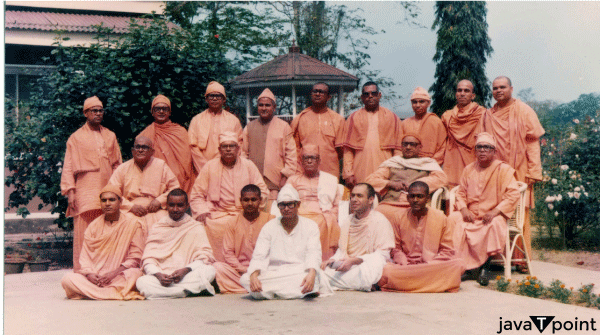
Swami Tej Chaitanya, later known as Swami Aatmananda, worked tirelessly to build the exquisite Swami Vivekananda Aashram of Raipur, which we see today. Swami Ji was so dedicated to the residents of Chhattisgarh that he donated any money he had left after constructing the temple to the poor. He labored tirelessly to offer food, shelter, and education to Bangladeshi immigrants who arrived in Chhattisgarh. He opened a religious and moral education school in Narayanpur at the government's request. He was well-known in Chhattisgarh due to his energetic work in promoting youth empowerment & moral instruction. While traveling from Bhopal to Raipur, this lively young spirit was stolen from us in an accident in Rajnandgaon on August 27. He was irreplaceable. Thus the loss will never be filled. Students Days at Nagpur AshramaTulendra attended Nagpur's highly esteemed Hislop College, around 300 kilometers from Raipur. A very old Ramakrishna Math was established there in the first decade of the twentieth century with the assistance of Mahapurush Maharaj (Swami Shivananda), Sri Ramakrishna's immediate student and the Ramakrishna Order's second President. Tulendra's father arranged for him to be admitted to Ashrama's Students' Home. As a resident of the Students' Home, Tulendra came into contact with various Order monks, understanding a lot more about the Ramakrishna-Vivekananda beliefs. He felt at ease in this elevating environment and participated in the Arati & other activities. Tulendra relocated to the University dorm during his post-graduation and attended the Arati at the Ashrama daily. 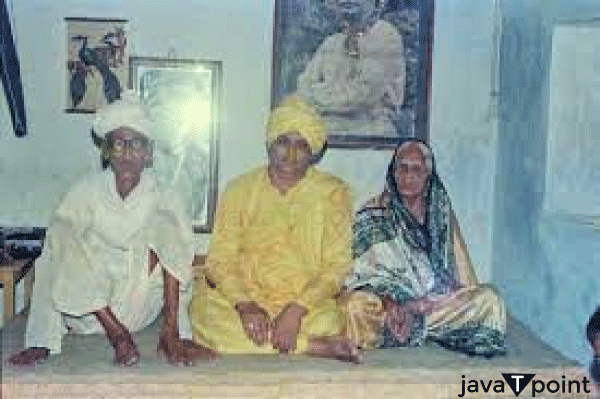
Tulendra's early years in the Ashrama, an environment where concepts and principles like purity, selfless devotion, and dedication were put into reality, had a tremendous impact on him. During this period, he obtained Mantra-Diksha (initiation) through Swami Virajananda, an experienced disciple of Holy Mother Sarada Devi who received the Sannyasa-Diksha from Swami Vivekananda and was the sixth president of the Ramakrishna Order at the time. Tulendra wrote to the Swami after his Mantra-Diksha, confiding his strong desire to adopt monastic life. The Swami urged him first to complete his post-graduation, which was already in progress, and then explore an existence of complete renunciation. Tulendra took this advice to heart and achieved the Gold Medal for his Master in Mathematics at Nagpur University. He took the civil services test at that time (for the IAS and other top government positions), passing the written portions of the test with extremely good marks. Tulendra pondered why he was doing this when his main objective was to progress on abstinence and supreme realization when he was called for the interview. He was already losing interest in pursuing any career in the outside world. He believed it was best and noblest to lead a life similar to that of Swami Vivekananda's monastic students. He believed that success might give rise to egotism and pride in him, even though he refuses it, and that it might also put him in conflict with his desire for worldly achievement. Tulendra decided to forego the interview to concentrate solely on spiritual development and advance the Ramakrishna-Vivekananda values. Message For Humanity ServiceMr. Bhupesh Baghel, the chief minister of Raipur, claimed that Swami Atmanand had led us to serve humanity. He made Swami Ramkrishna Paramhansa's visions a reality through his great acts. According to Mr. Baghel, Swami Atmanand significantly influenced the development of Math and the dissemination of Shri Ramkrishna's message throughout the nation. The Chief Minister spoke through video conference today at the Swami Atmanand Jayanti event held in Paatan Tehsil Headquarters of the Durg district. Beginning with a polite tribute, Mr. Baghel garlanded the image of Swami Atmanand in his home office. 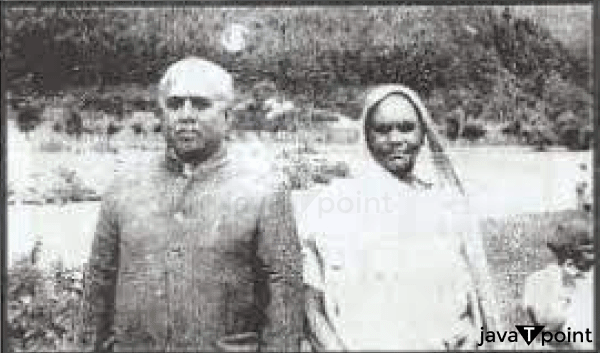
During the program's opening, Mr. Bhupesh Baghel announced the 'Dharsa Vikas Yojana.' Kuchcha roads and walks will be concreted under this plan. The Chief Minister was informed that a committee of secretaries from the Panchayat, Revenue, and PWD Departments would be established to create the plan. The English-medium schools opening in the state will be run under the Swami Atmanand English-medium School Yojana, according to Mr. Baghel. He continued by saying that the names of the schools given to famous people would remain the same. According to the chief minister, Swami Vivekananda spent most of his existence in Raipur after moving there from Kolkata. Swami Vivekananda's residences while in Raipur will be transformed into one of Swami Vivekananda's international memorials. Ravindra Choubey, the minister of agriculture; Dr. Premsai Singh Tekam, the minister of cooperatives; Dr. Shiv Kumar Daharia, the minister of urban administration; Mr. Pradeep Sharma, Mr. Subrat Sahu, the additional chief secretary to the chief minister, and Mr. Siddhartha Komal Singh Pardeshi, the secretary to the chief minister, were also present. Mr. Baghel praised Swami Atmanand's contributions and remarked that he showed us that the greatest religion is service to others. He devoted his entire life to serving the underprivileged. He started Math & Ashrams to raise money to help the people impacted by the drought. Educationist and social reformer Swami Atmanand. In Raipur, he founded an ashram and a library. He also had a keen interest in sports. Additionally, he contributed to the growth of Panchayati Raj organizations. During the 1971 Indo-Pak War, he donated money to construct camps in Pakhanjur, Raipur, and Dharamjaigarh. The list of his accomplishments in healthcare and child nutrition is endless. On October 2, 2019, we launched the Mukhyamantri Suposhan Abhiyan in the footsteps of the late Swami Vivekananda. A little over 13.77% of the children were treated for malnutrition under this program. According to the Chief Minister, we have launched the Haat Bazar Clinic Scheme & the Urban Slum Health Scheme. A video clip inspired by Swami Atmanand was shown to commemorate the occasion. Additionally present were Mr. Sitaram Verma, Mr. Mehettar Ram Verma, Mr. Ashwani Sahu, and office holders from other groups. His Many SidesAtmanandaji Maharaja was a very pleasant, cheerful, and fun-loving individual. He excelled at sports and activities and participated in them wherever he could. Wherever he went, he always liked to mix with young people. Once, after cutting the ribbons to open a pool inside the Ramakrishna Ashram in Gwalior, he was observed jumping in and swimming the entire length of the pool. He frequently visited the Gwalior Ashrama, where he discovered a table tennis table where he would play and happily defeat his opponents. He frequently used a table tennis table, still at the Ramakrishna Kutir Ashrama in Amarkantak. 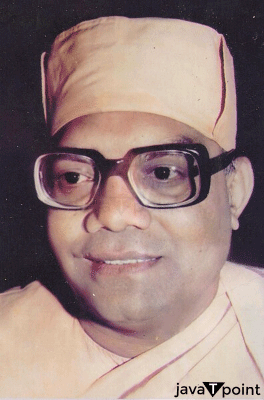
One of the Order's monks, Mahesh Maharaj, who died away in 2020, told this writer an intriguing tale. In the 1960s, when it was still not connected to the Order, he worked as the Headmaster at the Ashrama in Indore. Atmanandaji had told Mahesh Maharaj, who was not a Buddhist monk then, that he would arrive by night and spend the night in the city as part of a lecture program. Maheshji believed Maharaj was unlikely to arrive, given the time of day and the fact that he was still not in sight. After locking the building, he went to sleep in his first-floor room. He was woken at midnight by a pat on the back and found Maharaj standing over him, teasing him for failing to wait for him. Maharaj had reportedly risen via parapets and pipes. Maharaj then instructed him to bring anything that was still in the kitchen. After that, when Maheshji assumed Maharaj would retire to bed, Maharaj informed him that he was not in the mood to do so and proposed they should play Carrom instead. The two, therefore, sat down to play Carrom at that time. They retired when Maharaj had thoroughly enjoyed his time on the board. Maharaj was at ease in all circumstances and with all types of people, whether homeowners, brahmacharis beneath his tutelage, senior priests of the Regulation, or people from other orders and traditions. This was true even though he was a monk who had publicly forsaken life in the world. Even though he was a very senior monk in the Order and extremely well-known, he would frequently sit on the flooring in front of monks who were more senior than him and give them a gentle foot massage. He did not view being a monk as abandoning previous ties but rather as transitioning from the boundaries of a tiny family to accepting the entire world as one's family. Along with his two brothers, many other young men committed themselves to the Ramakrishna-Vivekananda ideals. They joined the Order, including Girish Dwivedi (who would later be Swami Srikarananda), Santosh Jha (that were later Swami Satyarupananda), Prabodh (Swami Nikhileshwarananda), and many more. Some young girls who felt motivated by him entered the Sri Sarada Math (Women's Monastic Orders of the Ramakrishna legacy) as nuns, committing themselves to the work of the Divine Trio of Ramakrishna-Sarada-Vivekananda. These women included Hemlata (who was subsequently Pravrajika Nirvananprana) and Kumud (Pravrajika Amitaprana). The eldest brother of Maharaj, Dr. Om Prakash, continued the family tradition of 'Divine in Man' service through the institution he founded, the Vivekananda Vidyapeeth while pursuing a career in academia. Following the commitment of the Universal Temple in Raipur in 1976, Maharaj also led his mother on ascension to Amarnath. His mom died when her head was in his lap throughout the journey. When the funeral rites were carried out, he was also there, saying a sorrowful farewell to her. He was always upbeat and supportive when interacting with younger colleagues and their families. His direct report to younger monks and brahmacharis found in him a terrific mentor for developing their spiritual lives. He served as a role model for them to aspire to because of his unwavering love for people and his enormous energy and devotion to the work of Thakur and Swamiji. One can't help but feel that Swami Atmananda's premature passing snatched away a highly charismatic and illustrious soldier of the Ramakrishna-Vivekananda movement who was yet at the height of his powers. It is fair to state that Atmanandaji Maharaj has contributed more than anybody else to promoting Ramakrishna Vivekananda's principles throughout the Hindi-speaking region of the nation. He left behind a lasting testament to his commitment to the Ramakrishna-Vivekananda values in the shape of the several organizations he supported and the group of committed people he taught, including monks and householders who uphold the same guiding principles. He was a great example of the harmonious fusion of the four yogas?Bhakti, Karma, Jnana, and Raja?that Swami Vivekananda envisioned in one person. 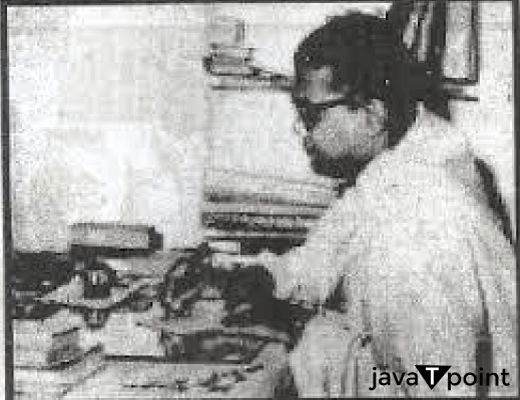
His last words in his last discourse on 26.08.1993 were as follows: "Ja Marne Se Jag Dare, Kabira Mana Anand Kab Mari Haun Kab Payi Haun, Puran Paramanand" (World is scared to die, Kabira is happy in his heart When one dies, he attains the bliss of God) On August 28, 1993, on "Bhadra Krishna Ekadashi," he embraced "Mahasamadhi" in Abohar, Punjab, while spreading religion. His devotees granted him "Samadhi" at PremDham Ashram in Aloknagar, Izzatnagar, and Bareily, Uttar Pradesh. At this location, the impressive Samadhi temple still stands today. Swami Atamanand Paramhans took on human form to spread knowledge and devotion in the hearts of his followers. His entire life has been filled with extraordinary, fantastical occurrences. He currently has a huge following in India and the rest of the world. His followers have documented and written about several significant magical encounters and his intense devotion to practice and engagement throughout the spread of his faith across the nation. Even now, the memories of the times spent with Swami Jee cause his followers to become emotional. Even though he adheres to Shri Sanatan Dharma, he still feels that all religions are in harmony. He sees it as his major job to passionately discuss God's and the world's modern and fundamental religion, Sanatan Dharma, and unite in selfless service. ConclusionAtmananda, also known as Sri Atmananda Krishna Menon, was a prominent Indian sage, guru, and philosopher from 8 December 1883 to 14 May 1959. Scholars have referred to him as a "neo-Hindu." His doctrines are the cornerstone of a spiritual practice known as the Direct Path. Chirimiri's Swami Atmanand Government English School seeks to level the playing field for talented students from economically disadvantaged groups in society.
Next TopicSamar Singh
|
 For Videos Join Our Youtube Channel: Join Now
For Videos Join Our Youtube Channel: Join Now
Feedback
- Send your Feedback to [email protected]
Help Others, Please Share









